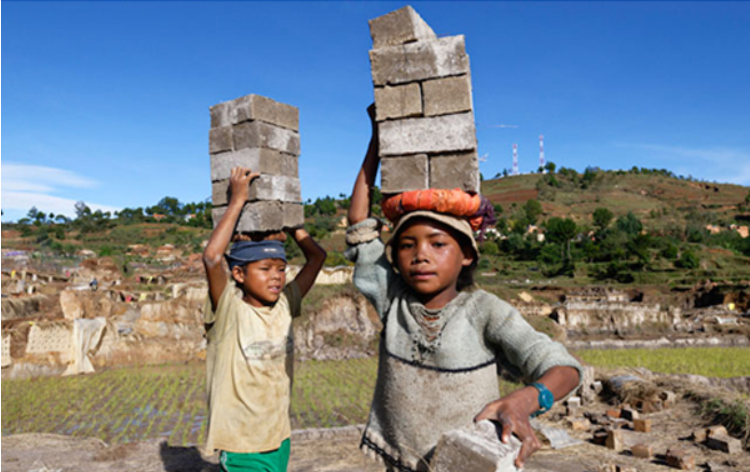|
WE MUST TACKLE THE ROOT CAUSES OF CHILD LABOUR: ILO DIRECTOR-GENERAL

ILO Director-General, Guy Ryder, called for urgent action to tackle the economic root causes of child labour, pointing out that attention needs to be paid not only to global supply chains, but also to unpaid family work in agriculture. “The challenge is not just about globally-traded garments, tobacco and cocoa; it is also about local markets for sorghum, millet, bricks – and it’s about domestic work as well,” he said, at a panel held on the sidelines of the International Labour Conference and ahead of the World Day against Child Labour, marked on June 12.
Ryder pointed out that some 152 million children aged 5 to 17 are in child labour worldwide. Between 2012 and 2016, there was “almost no reduction in the number of children aged 5 to 11 in child labour, and the number of these most vulnerable, youngest children in hazardous work actually increased.” This, Ryder added, is partly because child labour in agriculture – which is mostly unpaid family work – increased. “These children typically begin child labour at the age of six or seven and they commonly perform hazardous work as they get older.”
The event in Geneva also marked the 20th anniversary of the Global March against Child Labour, which culminated in June 1998, when hundreds of marchers, including children, took to the stage at the International Labour Conference, where delegates paved the ground for the adoption in 1999 of ILO Convention No. 182 on “Eliminating the Worst Forms of Child Labour.”
Kailash Satyarthi, an Indian children's rights activist and Nobel peace prize laureate who had led the march, told the panel that much still remains to be done. “If the children are still trapped in the international supply chains, if the children are still enslaved, if the children are still sold and bought like animals – sometimes for less than the price of animals – to work in the fields and farms, and shops and factories, or for households as domestic workers, this is a blot on humanity,” he said.
Basu Rai, from Nepal, who had been the youngest of the marchers who reached Geneva in 1998, said: “Still there are 152 million children who are languishing in a kind of slavery. So this is the time to act collectively.”
Several delegates held back tears as Zulema Lopez recounted her days as a child labourer in the United States.
“At the age of seven … it was normal for me to wake up at 5 o’clock in the morning, put on my shoes and my T-shirt and go to work in the hot sun, burning, 20- to 30-pound buckets of cucumbers next to me, trying to make ends meet.”
Sue Longley, General Secretary of the International Union of Food, Agricultural, Hotel, Restaurant, Catering, Tobacco and Allied Workers' Associations (IUF) stressed the importance of keeping a strong focus on agriculture, which is where about 70 per cent of child labour is.
Nazrene Mannie, from the Board of Business Unity in South Africa, highlighted the difficulty of tackling child labour when it takes place in family farms or enterprises, often hidden from public view.
This year’s World Day Against Child Labour also seeks to promote safety and health for young workers. Speaking on that topic, Mariam Kamissoko, of the National Social Security fund in Cote d’Ivoire, pointed out that the rate of accidents is higher among youth than among older workers.
|




